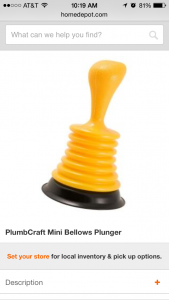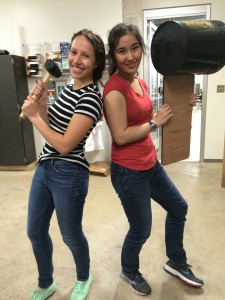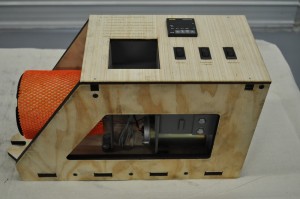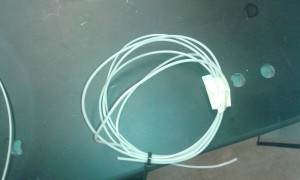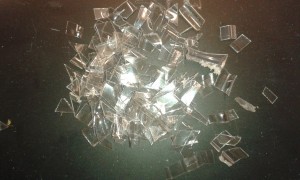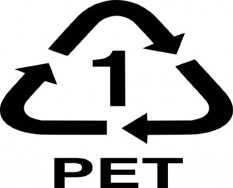Week Six: July 13th, 2015
Mikaela Juzswik
We went into this week with almost nothing. This sounds like an overstatement, but it’s actually quite true. As I mentioned in the last blog, recent developments allowed our budget to more than double, opening up an entirely new avenue of solutions that we had previously ignored due to cost constraints. We realized going in to this week that it was going to be rough—the budget increase, while entirely welcome to our design process, set us back by more than a week in terms of progress (which doesn’t sound terrible as I write it now, but this program is only eight weeks long, so every day counts). With this in mind, we shoved our entire faces into the grindstone and set to work.
In order to make our condensed work schedule as efficient as possible, we each spent the three day weekend brainstorming potential solutions and modifying our previous solutions to encompass the wider scope in cost. We had previously eliminated many viable solutions on the grounds that, while cheap, they weren’t cheap enough to fit into our <$10 budget. We reconsidered these ideas, modified and combined some of them, and also considered new ideas. Ultimately, we settled on a mix of the three: a mechanism that rocked back and forth on a set of bellows that could be powered by foot.
While we found this idea quite promising, we spent much of Monday addressing some of the more pressing design aspects. How much space would this take up? Would assembly be an issue? How could we make it out of available but sturdy materials? With these questions in mind, we began to shape out the details of our idea. We decided to make the device foldable, so it could fit in less than a cubic foot of space. Despite the foldable aspect, we also wanted to make the device as easy to assemble as possible, so we settled on hinged wings to create as few components as possible. We realized that it would be possible to machine a rounded shape like we were imagining, but it would be easier to draw from pre-existing materials, such as large pipes or buckets. With this in mind, our device quickly took shape. By Monday afternoon, we had conceptually fleshed it out and created a very low-fidelity prototype for proof of concept.
K’nex to the rescue.
We began building a higher-fidelity prototype on Monday evening, and this endeavor lasted us through the week. We still didn’t know what materials we wanted to use for diaphragms, so we turned online. We also found that it’s surprisingly difficult to order a cheap, gallon bucket (five-gallon buckets are actually less expensive than gallon ones, although the size trade-off is unideal for us).
We ended up taking a trip to Home Depot in search of a rather eclectic variety of objects—buckets, threaded rods, hinges, and miniature plungers.
The plungers, incidentally, aren’t used to unclog your toilet (as that would involve sticking a fair portion of your hand into some unsavory waters), but for sinks. Despite the prominent labelling, Leah, Nehuwa, and I spent about half an hour giggling as we considered what fools would buy such a tiny plunger (ignoring, of course, the fact that we were buying four of them).
Our field trip complete, we set out to divide and conquer. Leah and Nehuwa began finding ways to design breast shields that could be made for less than $10—these parts would half to be purchased by each nursing woman, so keeping these costs lower would be ideal. They also began working on tube management systems, using the Medela system as a guide. They experimented with water bottles, PVC, and even 3D Printing to develop several promising solutions that we’ll be tinkering with more this week.
I ended up getting my hands dirty and returning to the larger stuff. I sawed a bucket in half, laser cut some wood, messed around with a hook-and-eye, cut up some unsuspecting bellows, laser cut some more, cut up more buckets, and duct-taped the resulting horror together.
…and it actually turned out pretty nice. Being mature, responsible adults, we quickly combined all of our pieces (Leah and Nehuwa’s breast shields and tubing with my pressure generation system) and began testing our device by suctioning people’s faces. Using a combination of educated guesswork, we’re fairly certain that the pressure generated by the device is actually in a similar range to the Medela mechanical pump, which is fantastic. We’ll be doing real testing during this week, of course.
At some point on Friday, I ended up falling into a giant coal mine. And by the I mean I attempted to Dremel one of our buckets into a rounder shape, which essentially pulverized the bucket and covered me in bucket-powder. All in the name of science, of course.
Anyway, this week was fantastic. We covered a ton of ground, and went from literally zero to a working prototype that we’re hoping to send to Malawi with Dr. Wettergreen on Tuesday. That’s all for now, but there’s still a ton of work to be done in the remaining weeks ahead.










